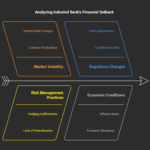In the realm of financial markets, the method of hedging plays a pivotal role in managing risk exposure. Two common strategies employed for hedging are futures and forwards contracts. Let’s delve into the advantages and disadvantages of each to discern their effectiveness in mitigating financial risks.
Pros and Cons of Hedging with Futures Contracts
Advantages:
Standardization: Futures contracts are standardized agreements traded on exchanges, ensuring uniformity in terms of contract size, expiration dates, and settlement procedures. This standardization enhances liquidity and facilitates ease of trading.
Liquidity: Futures markets tend to be highly liquid, with a multitude of participants engaging in buying and selling activities. This liquidity allows traders to enter and exit positions efficiently without significant price impact.
Regulatory Oversight: Futures markets operate under regulatory frameworks, providing transparency and investor protection. Regulatory oversight helps in minimizing counterparty risk and ensures fair and orderly trading practices.
Price Discovery: Futures markets serve as platforms for price discovery, where market forces of supply and demand interact to determine fair market prices. This transparency aids hedgers in obtaining accurate pricing information for risk management purposes.
Disadvantages
Margin Requirements: Trading futures contracts involves posting margin, which is a fraction of the contract value. While margin requirements vary, they can tie up capital and pose a financial burden, especially during periods of heightened volatility.
Potential for Basis Risk: Basis risk arises from discrepancies between the price of the futures contract and the underlying asset at the time of contract expiration. Despite efforts to align prices, basis risk can lead to imperfect hedging outcomes.
Limited Flexibility: Futures contracts have fixed contract specifications, including predetermined contract sizes and expiration dates. This lack of flexibility may not suit all hedging needs, particularly for customized risk management strategies.
Pros and Cons of Hedging with Forwards Contracts
Advantages:
Customization: Forwards contracts offer flexibility in terms of contract specifications, allowing parties to tailor agreements according to their specific hedging requirements. This customization enables precise risk mitigation strategies.
Private Agreements: Forwards contracts are privately negotiated agreements between counterparties, offering confidentiality and flexibility in terms of contract terms and conditions. This discretion can be advantageous for parties seeking customized solutions.
No Margin Requirements: Unlike futures contracts, forwards typically do not require posting margin. This absence of margin obligations eliminates the need for upfront capital, making forwards attractive for hedgers with capital constraints.
Disadvantages:
Lack of Liquidity: Forwards contracts are traded over-the-counter (OTC), resulting in limited liquidity compared to futures markets. Reduced liquidity can hinder the ability to enter and exit positions swiftly, potentially impacting hedging effectiveness.
Counterparty Risk: OTC forwards expose parties to counterparty risk, the risk that one party may default on its obligations. While counterparties can mitigate this risk through credit assessments and collateralization, it remains a concern, particularly in volatile market conditions.
Price Transparency: The private nature of forwards contracts means pricing information may not be readily available to market participants. This lack of transparency can hinder price discovery and make it challenging to assess the fair value of forward contracts.
In conclusion, both futures and forwards contracts offer distinct advantages and disadvantages for hedging financial risks. While futures provide standardized and liquid instruments with regulatory oversight, forwards offer customization and confidentiality. The choice between the two depends on factors such as liquidity needs, risk preferences, and the level of customization required for effective risk management in financial markets.











